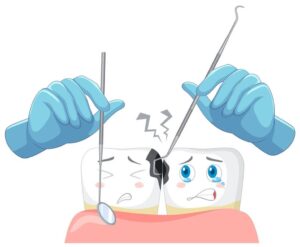
Ever looked in a mirror and thought, “I wish I had a nicer smile?” Well, you’re not alone. Many people think about getting their teeth worked on, and two popular ways to do this are composite bonding and veneers. Both treatments can fix dental problems like chipped or missing teeth, stains, or uneven gaps. However, there are also major differences, such as the cost. If you are thinking of getting your teeth done, then it is important that you know the benefits so you can make the right choice, and in this blog, we will give you all the information you need to ease your decision-making process.

This treatment involves using a soft material called resin to fix your teeth. Because of the resin’s natural colouring, your tooth will appear natural once the dentist applies it and solidifies it with a special light. This process usually takes one visit to the dentist and does not require much work on your real tooth.

Veneers are thin coverings made from porcelain or resin. A dentist sticks these shells to the front of your teeth. They are used for more difficult problems like stained or uneven teeth or gaps in the teeth. Unlike bonding, which is a quick and easy procedure, veneers are more complex, and as a result, they take more time and more visits.
1. Cost
Composite bonding is cheaper than veneers. The material is applied directly by the dentist, so there is no need for a lab to make anything. On the other hand, veneers, especially porcelain ones, are made in a lab, so they cost more.
2. Protection
With composite bonding, the dentist barely removes any of your tooth enamel. Because your tooth enamel is still in place, your natural teeth remain strong and healthy. Veneers require scraping off some enamel, which is permanent. Bonding is better if you want to keep your teeth as natural as possible.
3. Ease of Installation
Bonding treatments usually take only one visit, and your dentist can fix each tooth in 30 to 60 minutes. Veneers take longer because the dentist has to prepare your teeth, take impressions, and wait for the lab to make the veneers before they can even get started fixing them.
4. Ease of Removal
Bonding is an excellent option if you are concerned about long-term changes. It does not permanently alter your teeth; you can repair, change, or remove it at any time. Veneers, on the other hand, are permanent because the enamel is removed.
5. Appearance
Because resin is tooth-coloured, your dentist can match it to the colour of your teeth. They shape and polish the resin so it blends well with the rest of your smile. While veneers may look shinier and last longer, bonding gives a natural and good-looking result. It works well for minor problems like chips or gaps.
6. Ease of Repair
Veneers are harder to repair, and you’ll need to replace them if they are damaged, making bonding a practical choice for everyday life.
When Should You Choose Composite Bonding?
This treatment is best if you want to:
Bonding is an excellent option if your teeth only have minor issues and you want a simple, gentle, and affordable fix.

You might want veneers if you:
People who want a complete smile makeover with strong and beautiful results usually prefer veneers.
Pinner Green Dental: Expert Care for Your Teeth
Pinner Green Dental offers quality cosmetic treatments to help you improve your dental health, smile, and confidence. Our team ensures that you receive the best care and that every procedure is explained correctly.
At Pinner Green, we use modern methods to ensure your smile looks natural and comfortable. With flexible appointment times, Pinner Green Dental makes getting the smile you want as easy as ABC.
Choosing between these two treatments depends on your needs and budget. For expert advice and personalised care in Pinner, visit Pinner Green Dental. Book a call to learn how their team can help you achieve a confident, natural smile with treatments tailored just for you. Book your consultation today!!
< Back to Blog